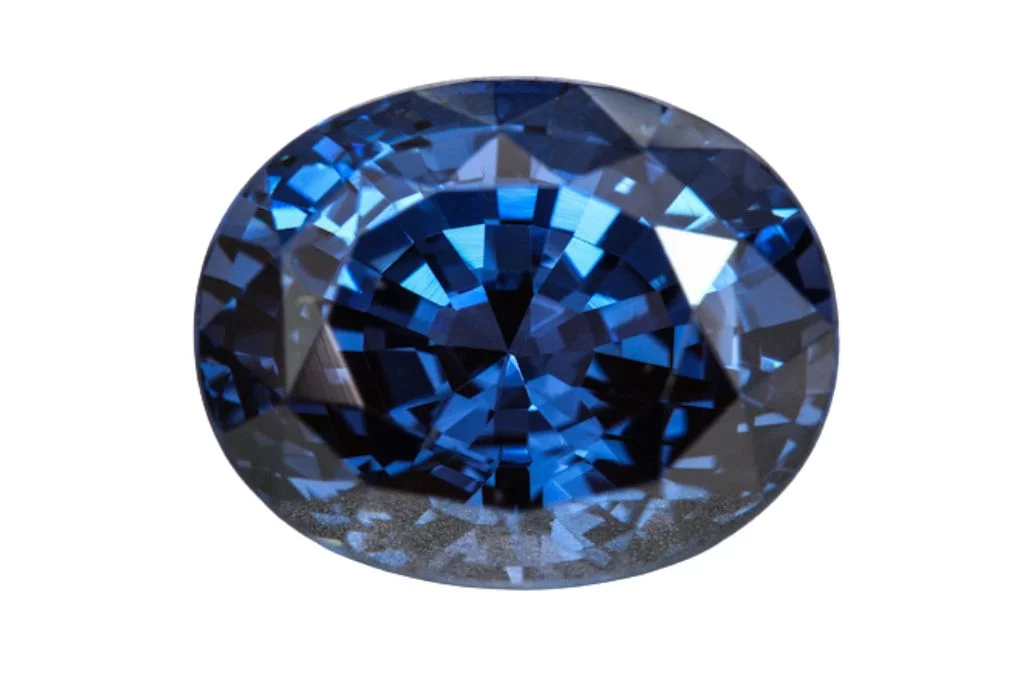Color and Appearance of Blue Spinel
Blue spinel is a stunning gemstone that captivates with its vibrant blue hue. The color of blue spinel can range from a light sky blue to a deep, rich cobalt blue. Some specimens may exhibit subtle hints of violet or green, adding depth and complexity to their appearance. The intensity and saturation of the blue color can vary, with the most prized stones displaying a pure, vivid blue without any grayish undertones.
Crystal Structure and Formation
Blue spinel belongs to the spinel group of minerals and crystallizes in the cubic crystal system. This structure gives blue spinel its excellent optical properties, including a high refractive index that contributes to its brilliant luster. The gemstone typically forms in metamorphic rocks, particularly in marble deposits, and is often found alongside other minerals such as ruby and sapphire.
Physical Characteristics
One of the most notable physical characteristics of blue spinel is its hardness, measuring 8 on the Mohs scale. This makes it a durable gemstone suitable for everyday wear in jewelry. Blue spinel also exhibits excellent clarity, often being free of visible inclusions to the naked eye. When inclusions are present, they can create interesting optical effects, such as asterism (star effect) in some rare cases.
Unique Features
What sets blue spinel apart from other blue gemstones is its single refraction property. Unlike doubly refractive stones like sapphire, blue spinel does not display pleochroism (different colors when viewed from different angles). This results in a purer, more consistent color throughout the stone. Additionally, blue spinel has a higher dispersion than sapphire, giving it more “fire” or spectral colors when light passes through it. These unique optical properties, combined with its rarity, make blue spinel a highly sought-after gemstone among collectors and jewelry enthusiasts.
Historical and Cultural Significance of Blue Spinel
Blue spinel has been prized for centuries, often mistaken for sapphire due to its similar appearance. This confusion led to several famous blue spinels being set in royal crowns and jewelry, believing them to be sapphires. The Black Prince’s Ruby in the British Imperial State Crown is actually a red spinel, highlighting the historical importance of the spinel family. In ancient times, spinels were mined in Sri Lanka and Myanmar, and were highly valued by royalty and nobility across various cultures.
Metaphysical Associations
In the realm of crystal healing and metaphysics, blue spinel is associated with throat chakra energy. It is believed to enhance communication skills, self-expression, and clarity of thought. Many practitioners claim that blue spinel can help alleviate anxiety and stress, promoting a sense of calm and inner peace. Some also attribute properties of spiritual growth and intuition development to this gemstone.
Common Uses and Benefits
Blue spinel is commonly used in jewelry making, particularly in rings, necklaces, and earrings. Its durability and brilliance make it an excellent choice for everyday wear. In alternative medicine practices, blue spinel is sometimes used in crystal layouts or worn as a pendant to promote healing and balance. Many people use this gemstone during meditation, believing it enhances focus and spiritual connection. Some also keep blue spinel in their living or work spaces to create a harmonious environment and stimulate creativity.
Modern Applications
In recent years, blue spinel has gained popularity among gem collectors and jewelry enthusiasts who appreciate its rarity and beauty. Some companies have begun incorporating blue spinel into technology-related products, such as smartphone cases or laptop skins, capitalizing on its purported electromagnetic properties. Additionally, the gemstone industry has seen an increased interest in ethically sourced blue spinels, leading to more transparent and sustainable mining practices in certain regions.

